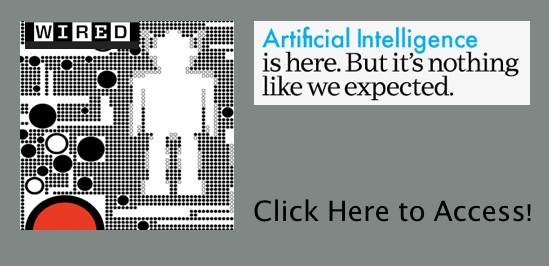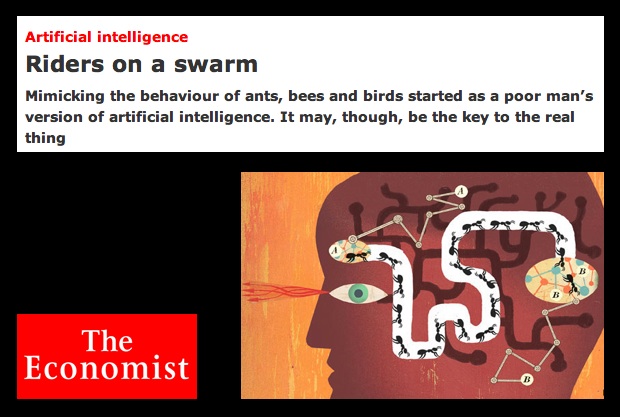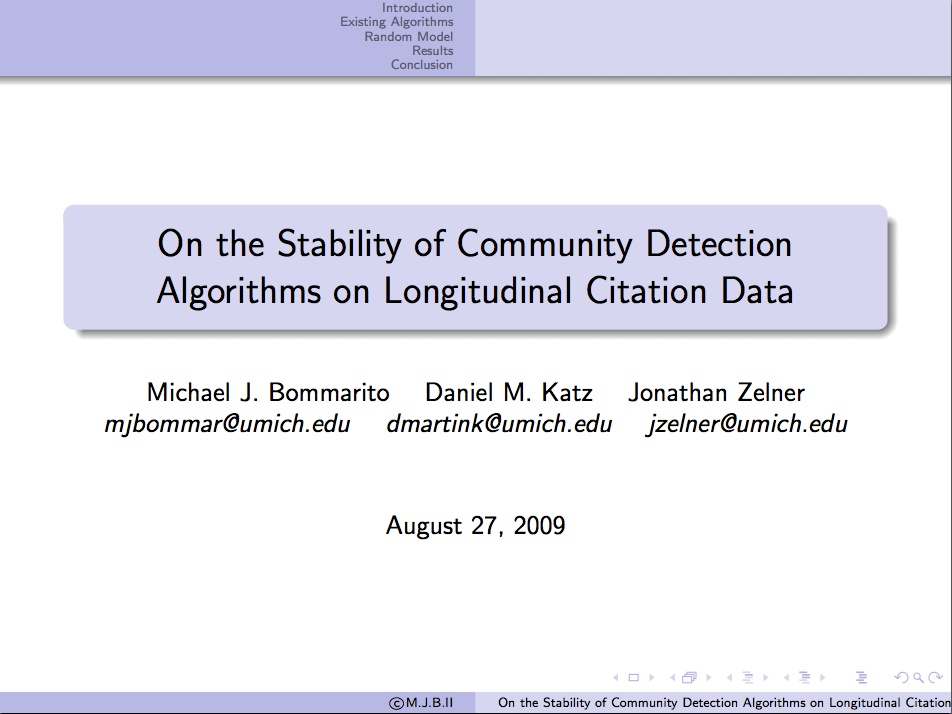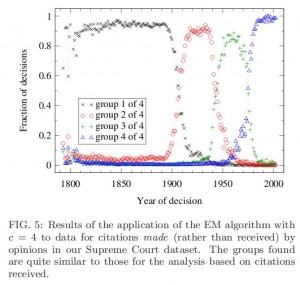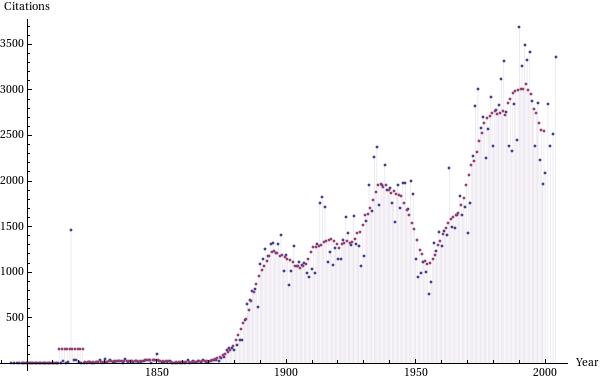From the Full Article: “AI researchers began to devise a raft of new techniques that were decidedly not modeled on human intelligence. By using probability-based algorithms to derive meaning from huge amounts of data, researchers discovered that they didn’t need to teach a computer how to accomplish a task; they could just show it what people did and let the machine figure out how to emulate that behavior under similar circumstances. … They don’t possess anything like human intelligence and certainly couldn’t pass a Turing test. But they represent a new forefront in the field of artificial intelligence. Today’s AI doesn’t try to re-create the brain. Instead, it uses machine learning, massive data sets, sophisticated sensors, and clever algorithms to master discrete tasks. Examples can be found everywhere …”
Tag: artificial intelligence and law
Law as a Complex Adaptive System: An Updated Reading List / Syllabus
As a new semester is here at Michigan CSCS, I have made several revisions to the content of our global reading list for the Computational Legal Studies Working Group. The content of this interdisciplinary reading list features work from economics, physics, sociology, biology, computer science, political science, public policy, theoretical and empirical legal studies and applied math. I wanted to highlight this reading list for anyone who is interesting in learning more about the state of the literature in this interdisciplinary space. Also, for those interested in learning model implementation, please consult my my slides from the 2010 ICPSR Course Introduction to Computing for Complex Systems. Feel free to email me if you have any questions.
Riders on a Swarm — Might Mimicking the Behavior of Ants, Bees & Birds Be the Key to Artificial Intelligence?
This week’s issue of the Economist has an interesting article entitled Riders on a Swarm. Among other things, the article discusses how attempts to computationally model ant, bee and bird behavior have offered insight into major problems in artificial intelligence.
For those not familiar, the examples discussed within the article are classic models in the science of complex systems. For example, here is the Netlogo implementation of bird flocking. It will run in your browser but requires Java 4.1 or higher. If you decide to take a look — please click setup – then go to make the model run. Once inside the Netlogo GUI, you can explore how various parameter configurations impact the model’s outcomes.
One of the major insights of the bird flocking model is how random starting conditions and local behavioral rules can lead to the emergence of observed behavioral patterns that appear (at least on first glance) to be orchestrated by some sort of top down command structure.
This is, of course, not the case. The model is bottom up and not top down. Both the simplicity and the bottom up flavor of the model are apparent when you explore the model’s code. For those interested, I will take a second and plug the slides from my ICPSR class. In the class, I dedicated about an hour of class time to bird flocking model. Click here for the slides. In the slides, I walk through some of the important features of the code (discussion starts on slide 16).
HarambeeNet @ Duke Computer Science
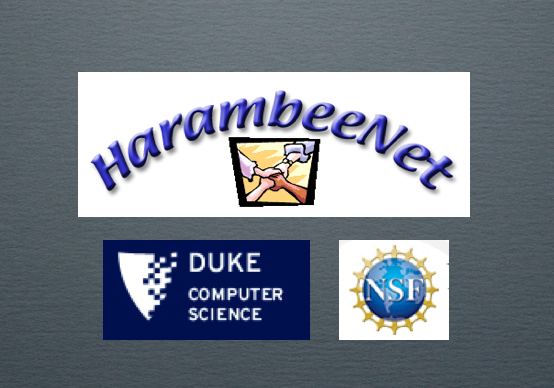
We enjoyed today’s discussion at the Harambeenet Conference here in the Duke Computer Science Department. The conference is centered upon network science and computer science education. It features lots of interdisciplinary scholarship and applications of computer science techniques in novel domains.
We are looking forward to an interesting final day of discussion and hope to participate in allied future conferences.
Artificial Intelligence and Law — Barcelona 2009
Live from Barcelona, we are on the road at the International Association for Artificial Intelligence and Law. Henry Prakken has just delivered the keynote address and we will soon be giving our presentation. The conference is interesting as it embraces a wide range of topics and intellectual traditions. For example, there is a significant emphasis on ontological reasoning, computational models of argumentation and the use of XML schemas. In addition, there are a number of folks using graph theoretic techniques and applying them to the development of the law. It has been a nice few days and we have enjoyed our time here. Tomorrow, the trip continues….
Tax Day! A First-Order History of the Supreme Court and Tax
Click to view the full image.
In honor of Tax Day, we’ve produced a simple time series representation of the Supreme Court and tax. The above plot shows the how often the word “tax” occurs in the cases of the Supreme Court, for each year – that is, what proportion of all words in every case in a given year are the word “tax.” The data underneath includes non-procedural cases from 1790 to 2004. The arrows highlight important legislation and cases for income tax as well.
Make sure to click through the image to view the full size.
Happy Tax Day!
When is the first term enough?: On approximation in social science
Research in the academic world suffers from the “hammer problem” – that is, the methods we use are often those that we have in our toolbox, not necessarily those that we should be using. This is especially true in computational social science, where we often attempt to directly import well-developed methods from the hard sciences.
To prove the point, I’d like to highlight one example we’ve come across in our research. In Leicht et al’s Large-scale structure of time evolving citation networks, the authors apply two methods to a simplified representation of the United States Supreme Court citation network. Both of these methods rely on complicated statistical algorithms and require iterative non-linear system solvers. However, the results are consistent, and they detect “events” around 1900, 1940, and 1970.
One first-order alternative to detecting significant “events” in the Court would be to count citations. One might suspect, for instance, that the formation or destruction of law might go hand-in-hand with an acceleration or deceleration in the rate of citation. Such a method is purely conjectural, but costs much less to implement than the methods discussed above.
This figure shows the number of outgoing citations per year in blue, as well as the ten-year moving average in purple. The plot shows jumps that coincide very well with the plot from Leicht, et. al. Thus, although only a first-order approximation to the underlying dynamics, this method would lead historians down a similar path with much less effort.
This example, though simple, is one that really hits home for me. After a week of struggling to align interpretations and methods, this plot convinced me more than any eigenvector or Lagrangian system. Perhaps more importantly, unlike the above methods, you can explain this plot to a lay audience in a fifteen minute talk.

